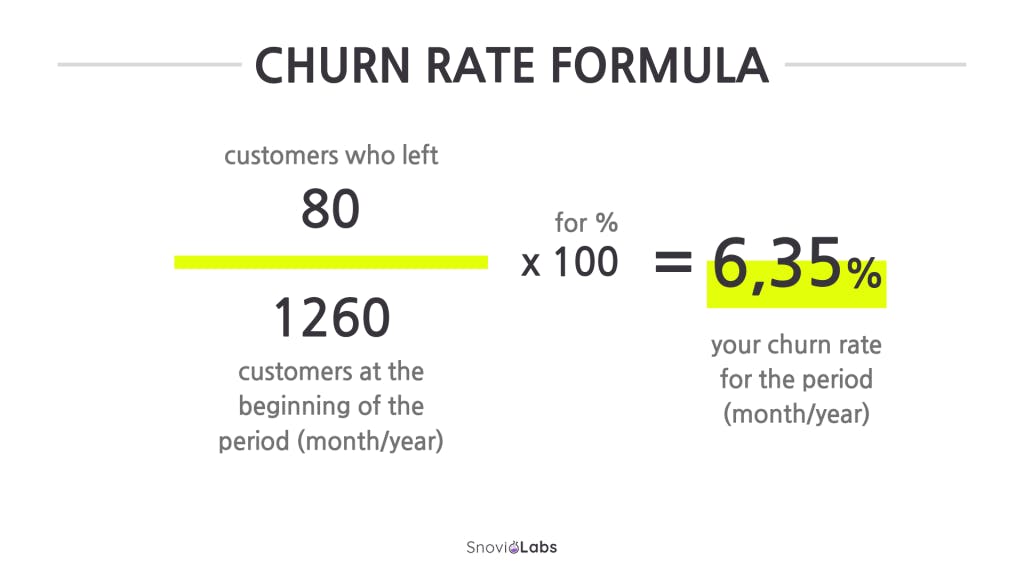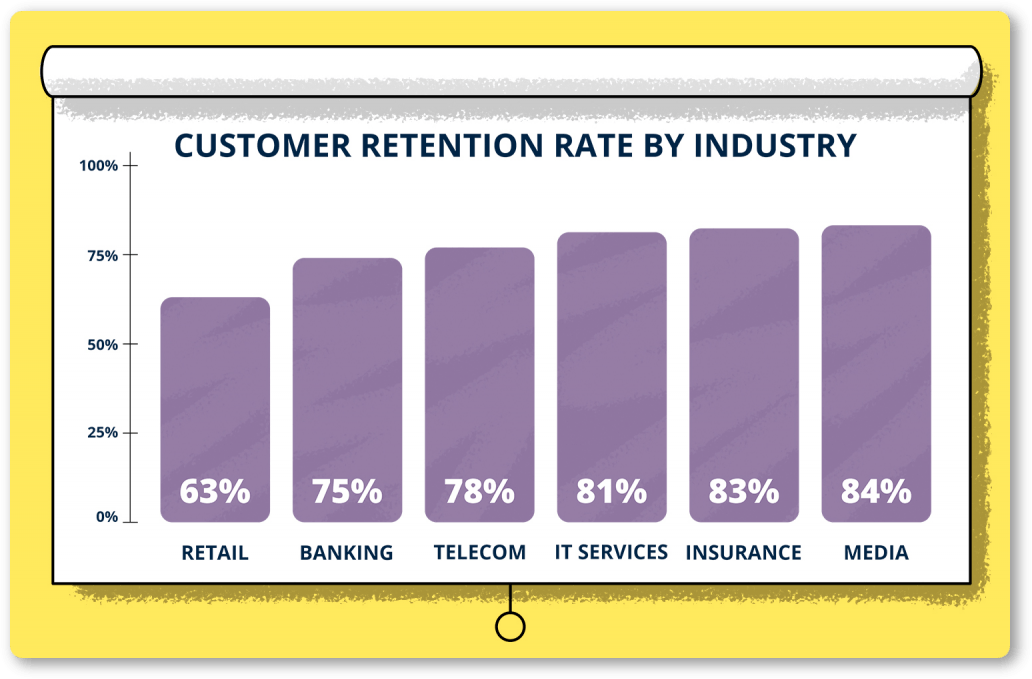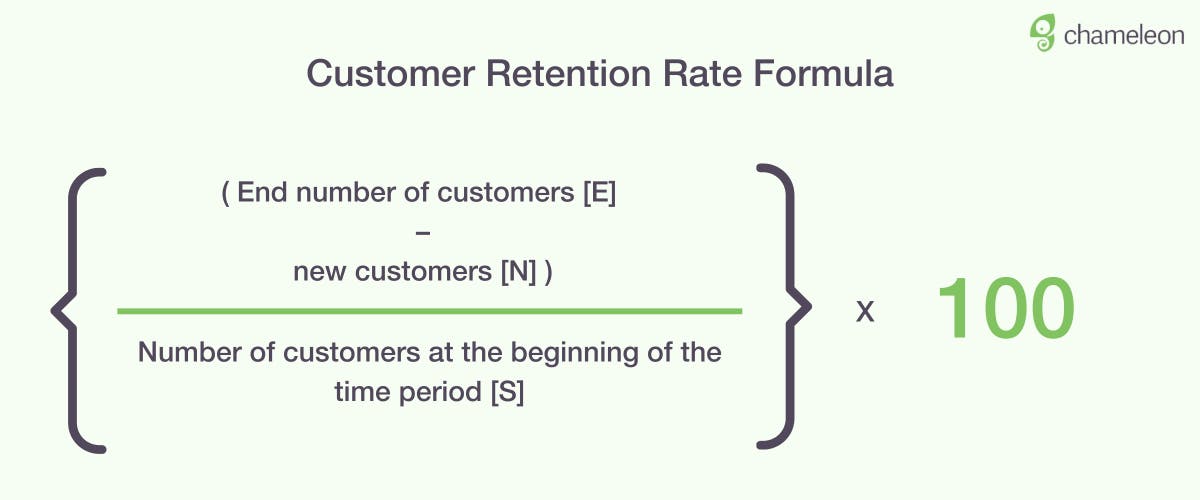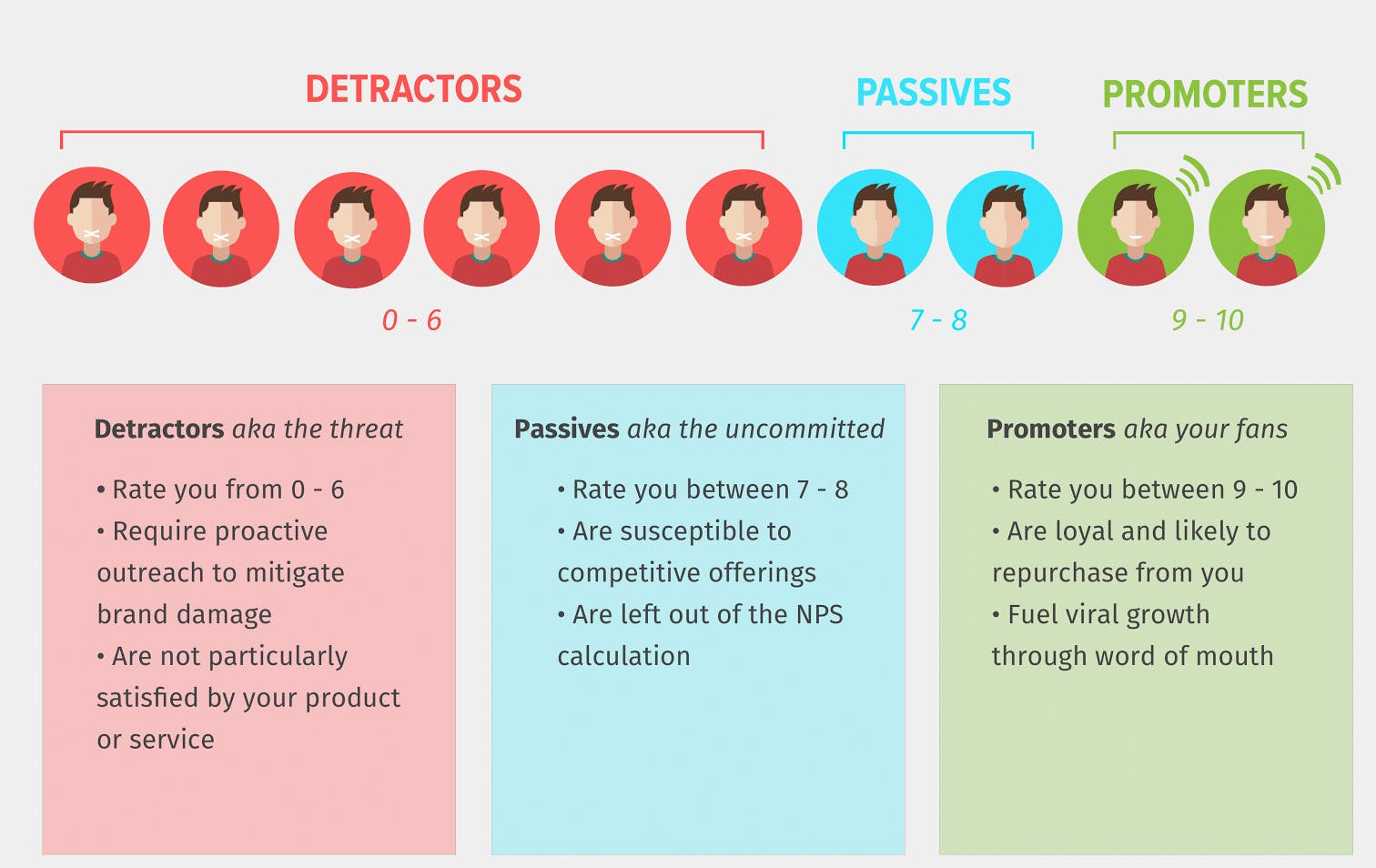What is a retention rate: formula and how to calculate it
Mar 9th, 2023

Contents
What is a retention rate?
How to calculate the retention rate?
How to improve the retention rate?
Acquiring new customers is the main focus of any business. But keeping your current clients loyal to your brand and encouraging them to buy from you regularly is more crucial than just expanding your customer base. According to the statistics, retaining an existing customer is 5 to 25 times cheaper than attracting a new client. Moreover, loyal customers are valuable for any business as they generate stable profits. Thus, increasing customer retention enhances the chances that a consumer will become a devoted client and significantly affect earnings.
It is now evident that customer retention is a key objective for most companies. So before we examine how to estimate customer retention and describe various ways to improve it, let us first discuss the concept of customer retention in detail.

What is a retention rate?
Retention rate is the proportion of clients who continue using a product or service over a specific period. The opposite of the retention metric is the churn rate or the percentage of users a business loses over a given period. Customer retention is a crucial metric for subscription-based companies as it directly impacts profitability. For example, SaaS development companies, organizations with regular clients, and businesses that provide services use a retention rate to gauge the company’s success.
Let us consider an example. If your company had 100 loyal clients, but only 70 of them were active at the time of measuring the retention rate, then this percentage would be 70%. However, if you lost 30 clients but attracted 40, it does not imply that your company has a 110% retention rate. This is because these consumers have just started using your services, so you cannot call them loyal clients yet. Thus, when measuring retention rate, be careful about new users.
Customer retention rate allows for learning more about the factors that attract clients to the business and identifying areas for improvement. For example, high retention indicates that the existing customers appreciate the company’s products and are a reliable source of ongoing revenue. On the other hand, a low retention rate is a sign that the business does not provide a good enough service to the clients. Moreover, this metric helps firms estimate the level of customer loyalty and satisfaction, evaluate customer experience and understand what benefits consumers receive from their products.
Now we will compare the two opposite metrics for customer retention: retention rate and churn rate.
Retention rate vs churn rate
The churn rate or attrition rate is the proportion of consumers who stop doing business with a specific company. This rate can refer to users who canceled or did not renew a subscription to a product over a selected time frame or customers who gave up on using one brand in favor of its rivals. In other words, the churn rate is the number of consumers a business has lost over a certain period.
The lower your churn rate is, the better because a high churn results in larger expenditures on customer acquisition. According to research by Cobloom, an acceptable yearly churn rate for established SaaS companies is 5-7%, while the monthly result should be around or less than 1%. On the other hand, early-stage startups and SaaS companies that target small and midsize businesses typically have a 10-15% churn for the first year. Accordingly, their monthly performance would be expected to be at most 3% to 5%. Finally, their goal is to reach a 3% annual churn for the following years.
To determine the churn rate, you need to identify the time period you want to measure. For example, if you run a small business, you can monitor monthly or yearly churn. In contrast, if your company is large, you need to track the weekly result. You can also measure quarterly or semi-annual churn. The formula for calculating this metric is as follows:
Churn Rate = (Number of Lost Users / Total Number of Consumers at the Beginning of Time Frame) × 100

Retention rate and churn rate are interrelated. It means that you can measure the acceptable retention rate for your business by subtracting the churn rate using the formula:
Churn + Retention = 100%
You can use the churn rate benchmarks we provided earlier in this article. For example, if your churn result is 10%, then the retention rate will be 90%. In addition, the purpose of measuring customer churn is investigative. This metric is used to identify failures and understand factors that influence losses in the client base. By contrast, retention rate calculation is crucial for lowering acquisition costs, gauging the state of the company, and identifying the potential for future growth.
In the following section of the article, we will describe how to measure the retention rate with a special formula.
How to calculate the retention rate?
Some businesses measure retention rates annually, monthly, or weekly. However, fast-growing SaaS organizations can track this metric daily because of the quick changes in the user bases. The retention rate dramatically depends on the industry. Generally, a retention rate of over 85% is considered suitable for most companies, while 90% is a perfect result. Let us discover how to measure the retention rate for your business to monitor the progress of your objectives and initiatives.

When calculating retention, you compare the number of clients who remain at the end of the defined time frame to clients who subscribed to the service or used a product at the beginning of a period. So you need to identify the period you want to analyze. Then you need to count the number of clients at the beginning of the time frame (S). Further, you should find the number of users at the end of the time frame (E). Lastly, you need to measure the number of new clients added over a specific period (N). Once you have gathered the required data, you may enter it into the formula:
CRR = [(E-N)/S] x 100

Now we will analyze the formula in greater detail. We will start with the number of clients your company acquired at the end of the time frame (E). If you are calculating the annual retention, E is the number of clients you have at the end of the year. Then you need to subtract the number of new users you have attracted this year (N). The next step is to divide the result by the number of clients at the start of the time frame (S). Finally, multiply the resulting number by 100.
Consequently, you will get a proportion of users your organization retained over time. For example, if your company had 100 clients at the beginning of the period (S), 100 clients at the end of the time frame, and acquired 10 new clients during that time, your retention would be 90%. [(100-10)/100] x 100 = 90%. Next, we will describe five ways to improve this metric.
How to improve the retention rate?
Once you know how to calculate customer retention rate, it is time to implement retention methods into your daily operations. These strategies and tips will help you retain existing clients, increase customer loyalty and connect with your audience.
Build a smooth onboarding process
The user onboarding process is one of the best ways to maintain close relationships with your customers and convince them they have made the right choice. With the nurturing process, you can familiarize your clients with a product, provide assistance and support and share step-by-step lessons and guides. If you manage to create an excellent first impression, customers will stay with your company for a long time.
The onboarding process should be personalized, so you need to collect customer data from reviews, buying preferences, and purchasing history. Customize product packaging and customer support to provide an excellent customer experience. Make sure to use the client’s name in the subject line of your emails.
The first step of the onboarding strategy is to create a welcome email and an in-app greeting message to congratulate customers on their purchases. Express gratitude to them for choosing you over the other alternatives and your excitement at having them on board. Then develop a short tutorial to explain product setup to users. You can also create an interactive walkthrough to demonstrate to consumers how to use your product. A great idea is to build a knowledge base or a chatbot that answers frequently asked questions and helps customers solve their problems. Finally, send in-app notifications and congratulatory emails when consumers reach the milestones and get one step closer to their objectives.
Collect customer feedback
Conduct regular surveys and ask for customer feedback to gain actionable insights about the advantages of your product and the areas that need improvement. Customers feel appreciated when you ask them about their opinions. They will be delighted if you let them know about your product upgrades in response to their comments. In addition, surveys help you identify dissatisfied customers before they decide to cancel their subscriptions. It is a superb opportunity to fix product flaws and develop offers and campaigns that help win unhappy customers back.
One of the simplest and most popular methods to measure customer loyalty is the Net Promoter Score. It consists of one question: How likely are you to tell a friend about [your company name] on a scale of 0 to 10? Then you can include a section where customers can provide a more detailed explanation of their scores. Also, add a customized Thank you message after a survey to demonstrate that you value customers’ opinions and take steps to get better.

Provide exceptional customer service
Outstanding customer service is one of the most crucial components of your retention strategy. 96% of customers are ready to abandon a brand or company due to poor customer service. Therefore, your customer support team should answer customers’ questions and respond to their issues as soon as possible. Encourage customer service representatives to add a personality in conversations to ensure that a chat with a client does not look like a robotic talk.
Your customer support team can notice the signs of churn at the early stage. Teach your team to look out for warning signs so they can react to these signals in advance. It is critical to record and share customer insights, so help your team gather, organize and analyze information regarding how customers use your products, including the words they use and demands. Maintain contact with customers by investigating previous problems. Inform them if an issue is fixed or a new feature is added to the product.
Educate customers about your product
Explaining to your customers how to use your product and describing its benefits is the other powerful retention strategy. It allows you to build trust, establish your company as a thought leader and engage consumers. Before creating the educational program, a company should identify the core problem that the product solves, discover customers’ goals and pain points, and understand how the product aligns with these objectives.
The company should choose the appropriate formats of content marketing to educate customers. For example, an organization can create online courses or host scheduled webinars about product features and usage tips. A company can implement an email marketing campaign and share guides and customer learning content. In addition, you can involve product experts, conduct workshops, and build an online community to discuss the brand and its products.
Deliver more than you promised
Go beyond customer expectations and provide surprises they did not expect. These can be free bonuses like discounts, coupons or special offers, birthday greetings, or invitations to seminars. Remind customers about the company with high-quality content like a weekly email newsletter, videos, podcasts, and PDF materials. Run contests on social media to keep customers interested in your brand.
Create loyalty programs that include lifetime membership, exclusive deals, cashback offers, and gifts for bulk purchases. Reward users for their activity on your website by providing points and bonuses for creating an account, signing up for your newsletter, making purchases, or promoting your brand on social media. You can also offer rewards such as discounts or free merchandise to recruit new clients.
All these efforts will result in a low churn rate and high retention rate, which means that your customers are satisfied with your product. It also indicates that you have identified the customer needs and you are successfully addressing them. Now you need to keep coming up with new ideas to maintain a competitive advantage over any future market entrants.
